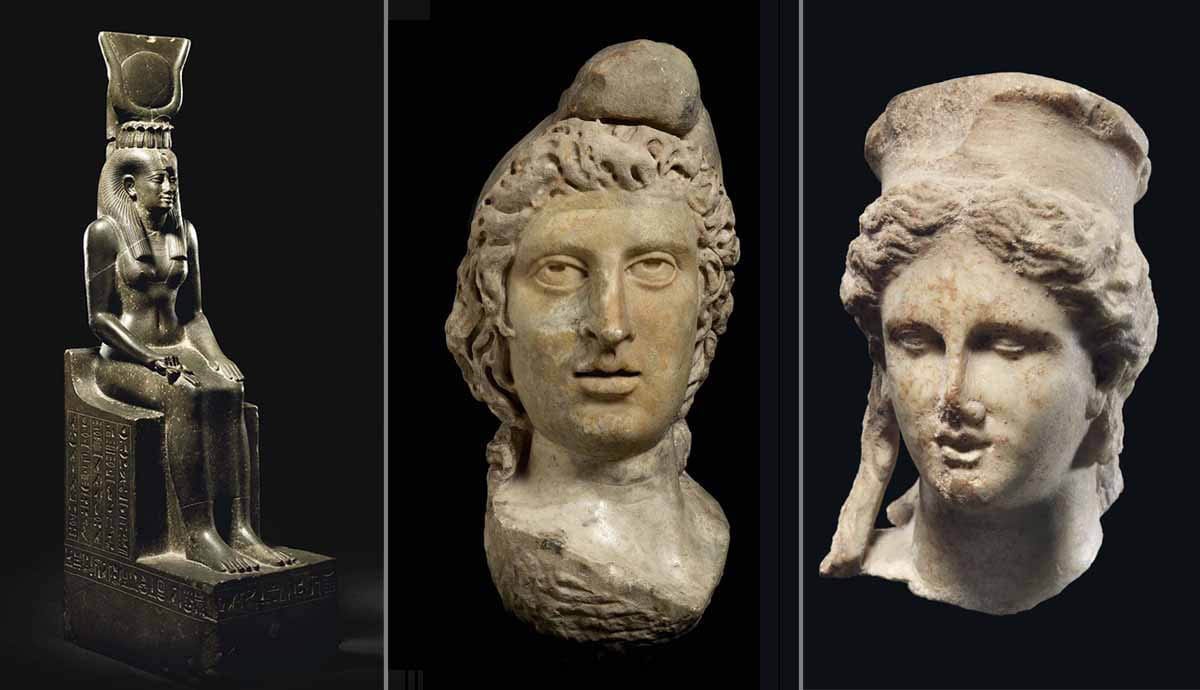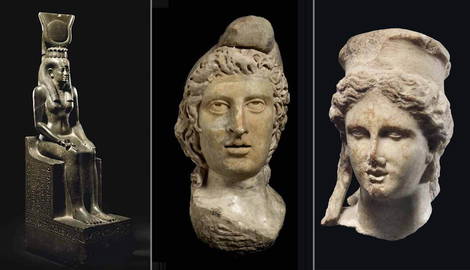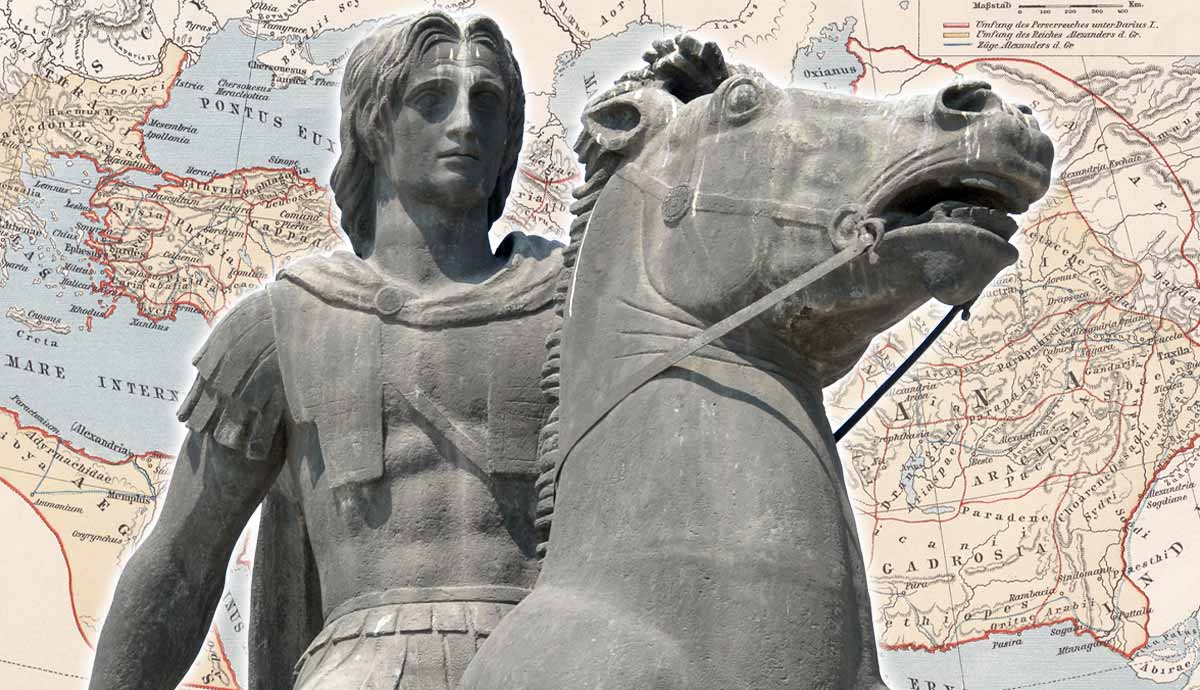
Religion in ancient Rome shaped many aspects of daily life for all members of society. The polytheistic state religion with its pantheon of Graeco-Roman deities was the most dominant form of worship. But by the 2nd century AD, this state religion had declined in popularity. Instead, people started to look towards new religions, such as those of Cybele, Isis, and Mithras. These new religions mostly originated from the East, and are often referred to as Eastern religions. This is a broad term that encompasses modern-day Egypt, Syria, Iran, and Turkey.

The Eastern religions, also known as cults, came to Rome via Greece. The Greek world was greatly expanded by the conquests of Alexander the Great in the 4th century BC. As Alexander’s army marched as far as India, contact with new and exotic cultures and religions became more common. Over the following centuries, these cultural and religious influences began to filter into the increasingly powerful Roman world.
Eastern Religion In Ancient Rome – Cybele, Isis And Mithras

By the time of the Roman Empire, Cybele, Isis, and Mithras played important roles in religion in ancient Rome. Their worshipers stretched well beyond Rome and as far as Britain and the Black Sea. For three deities with such distinctive identities, there were also notable similarities between their cults. Each cult involved complex initiation ceremonies, also known as ‘Mysteries.’ There were also parallels in symbolism and divination practices. But what really drew these three cults together was the fact that they all offered a sense of personal salvation to their followers. Some scholars have even argued that this emphasis on salvation helped to create an environment in which Christianity would eventually flourish.

However, not everyone was drawn to these new and exotic religions, many people were suspicious of them. The poet Juvenal epitomized this hostility in his Satires, which are full of aggressive comments about their followers and practices. But for every critic, there was a devotee. The cults of Cybele, Isis, and Mithras attracted worshipers from every section of society, from emperors and politicians to freedmen and slaves.
Cybele, The Great Mother-Goddess

Cybele was originally known as the Great Mother-Goddess of Anatolia, modern-day central Turkey. The Anatolian Cybele was a fertility goddess who watched over the world. Her Roman equivalent drew parallels with the ancient Anatolian goddess in that both were primarily goddesses of well-being. Roman Cybele was a fertility goddess but also a protector from disease and the violence of war. She was also a goddess closely associated with nature, particularly mountains, and she is often depicted with guardian lions.

The cult of Cybele came to Rome under unusual circumstances. We have a very specific year for her introduction to religion in ancient Rome. The year was 204 BC when Rome was in the midst of its wars with Carthage, known as the Punic Wars. When the Romans appeared to be losing the war, a mysterious prophecy came to the attention of the Roman Senate. This prophecy stated that if the Anatolian Cybele was brought to Rome then the enemy would be repelled. A sacred statue of Cybele was duly shipped into Rome and the Carthaginians were soon on the retreat. The day the statue arrived was later celebrated as the games-festival of Megalensia.

Cybele’s main point of difference from the state religion in ancient Rome was that she offered her followers salvation through immortality. The roots of her links with immortality lie with the character of Attis.
In the mythological story of Attis and Cybele, the pair fell madly in love. But love affairs between mortals and gods rarely run smoothly. Soon the young Attis was unfaithful to Cybele. The goddess was furious and instilled in him an all-consuming madness. In his madness, Attis castrated himself to atone for his infidelity and died from his wounds. Attis was then reborn as an immortal sun god and the first priest of Cybele.
From then on priests of Cybele were often eunuchs, also known as Galli. In an initiation process under a trance of ecstasy, the would-be priests carried out their self-castration. They were believed to be giving their fertility to the goddess, physically and symbolically.
The Mysteries Of Cybele

By the Imperial Era, the worship of Cybele stretched across the Roman Empire. Her followers were from all sections of society and she was especially favored by women. During celebrations held in Cybele’s honor, these followers enjoyed a very different experience from the formal and traditional state religious ceremonies. Priests and worshipers alike wore brightly colored clothing and music filled the air. Exotic instruments, such as cymbals and reed pipes, whirled the worshipers into a frenzy. In this state of ecstasy, followers believed that they experienced prophetic thoughts and numbness to pain.

Cybele’s main festival was the spring festival, held every March in Rome. This was a festival that lasted for many days. To begin there was a procession and a sacrifice, this was then followed by a week of fasting, a symbolic form of rebirth. Next, there was a procession in which a pine-tree (a symbol associated with Attis) was brought to the Temple of Cybele on the Palatine Hill. Finally, feasts were held and a statue of the goddess was bathed in the River Almo.
The Mysteries of Cybele encompassed perhaps her most important ritual. This was an initiation ceremony for followers called the taurobolium. As the name suggests, Mysteries were largely secret, but we know the rough outline of the ritual. The recipient would bathe in a purpose-built ditch filled with the blood of a bull. Meanwhile, a live bull was sacrificed above their head by a priest.
Isis, The Egyptian Goddess

Isis, like Cybele, was an ancient goddess long before she reached Rome. She was an Egyptian goddess and the wife and sister of the god, Osiris. In Egyptian religion, Isis was the protector of women and marriage, maternity, new-born children, and the fertility of the harvest. We can, therefore, see clear similarities with the goddess Cybele.
The Graeco-Roman version of Isis simplified this wide-reaching sphere of influence. In religion in ancient Rome, Isis was worshiped as a life-giver, a healer and protector, particularly of the family unit.
One important source of information on the Graeco-Roman Isis comes from the aretalogies. Aretalogies were inscribed texts praising deities, often written in the first person. The praise comes in the form of a list of qualities and attributes. Some lists include unexpected details. For example, an aretalogy found in Kyme in Greece names Isis as the creator of hieroglyphs, alongside the god, Hermes.

The cults of Cybele, Isis, and Mithras attracted followers from every part of Roman society. But the cult of Isis was particularly popular among those on the fringes of society. Slaves, foreigners, and freedmen were among her early devotees, presumably drawn to the allure of protection and salvation offered by the goddess.
Egyptian cults were banned under the rule of Emperor Tiberius but his successor, Emperor Caligula, actively encouraged them. This led to a growing interest in Isis and her followers soon included women and high ranking officials. Isis’ cult spread rapidly in the 1st century AD throughout the Empire, mainly via traveling soldiers and traders. Soon she had temples everywhere from Spain to North Africa and Asia Minor. Her popularity reached its zenith at Rome and Pompeii in the 2nd century AD.
The Mysteries Of Isis

Much of what we know about the Mysteries of Isis comes from Metamorphoses (also known as The Golden Ass) by the 2nd-century AD prose writer, Apuleius. Apuleius describes the adventures of Lucius who dabbles in magic and accidentally changes himself into a donkey. After various challenges, the goddess Isis changes him back and makes him her priest in a complex initiation ceremony. The exact details of the initiation process are not revealed, the secrecy is part of the pact between mortal and deity. But it is vaguely described as a ritual death followed by a rebirth into the light shone by Isis.
Apuleius gives great detail about the procession held on the festival day of Isis. He describes a joyful atmosphere with worshipers shaking the sistrum, a type of musical instrument similar to a rattle. Statues of the Egyptian gods file past and then attention turns to the priests.

Priests played an important part in the dissemination of religion in ancient Rome. The cult of Isis had both priests and priestesses. In the procession, they walked in a line each holding a symbolic object sacred to Isis. These ranged from a lantern, representing light, to a breast-shaped container full of milk, representing fertility. The High Priest brought up the rear holding a sistrum and some roses.
The procession terminated at the Temple of Isis. The Temple of Isis in Rome was destroyed by fire in AD 80 but it was later rebuilt by Emperor Domitian. Its obelisks are still visible today at the Temple of Minerva and in front of the Pantheon. Pompeii also had a beautiful temple to Isis. Thanks to the incredible levels of preservation at Pompeii, large parts of the temple have been discovered. Fresco paintings have also been found depicting the goddess and her worshipers.
Mithras, The Bull-slaying Sun God

This ancient god had his roots in Indian and Iranian cultures, where he was known as Mithra. Mithra was a Zoroastrian deity associated with light and oaths. The Graeco-Roman version, Mithras, gradually developed a separate identity from Mithra. Mithras’ mythological backstory is somewhat elusive. Most versions relate that Mithras was born from a rock. After receiving instructions from the messenger of the Sun god, the raven, he killed a savage bull inside a cave. It is likely that Mithras killing the bull was meant as an allegory for the salvation of mankind, with the bull representing evil.
As well as being a savior god, Mithras was also worshiped as a sun god, thereby retaining a link with his ancient origins. His cult flourished in the Roman Empire in the 2nd and 3rd centuries AD and was most prominent in Rome and Ostia.

The cults of Cybele, Isis, and Mithras all had broad appeal across society. However, the cult of Mithras was the only one that was open exclusively to men. In its earliest incarnations, Eastern religion in ancient Rome was often the preserve of those of lower social status. Mithras’ male followers were no exception since the emerging cult mainly attracted soldiers, freedmen, and slaves. It is thought to have only reached popularity among the elite in its later years of the 4th century AD. But some historians believe that Emperor Commodus, who reigned 177–192 AD, was also an initiate. The 4th-century AD Historia Augusta tells us that Commodus desecrated the rites of Mithras with murder. This suggests that he was already a member of the cult.
The Mysteries Of Mithras

While there is much archaeological evidence of Mithraism, there is very little literary evidence. No sacred texts detailing the rituals and practices of initiates have been discovered. We do know that followers worshiped in small, autonomous groups. One important aspect of Mithraism was that it was conducted underground. Groups would worship and socialize in a subterranean room or cave, known today as a Mithraeum.
After worship, a communal meal was held. In some instances, the meal was placed on the hide of a slain bull. From excavated frescoes, we know a little about the initiation ceremony. There were seven progressive stages, each under the protection of a planet. The connection between the cult and astrology is unclear, but it is possibly linked to Mithras being a solar deity. We also know that Mithraism did not have priests, instead, leaders of worship were known as Fathers.
The Mithraeum Was Unique In Religion In Ancient Rome

No other cult or religion in ancient Rome involved an underground place of communal worship. By the fall of the Roman Empire, there were thought to be over 600 Mithraea just in Rome alone. To date, archaeologists have discovered evidence of Mithraism in over 400 find spots across Europe. The London Mithraeum is a particularly fine example. In September 1954, a marble bust of Mithras was unearthed at an excavation site in Walbrook. This discovery confirmed the identity of a nearby structure as a Mithraeum.
Many Mithraea are often discovered underneath Christian churches, such as the Basilica of San Clemente in Rome. The internal decoration of Mithraea was very consistent and included images of Mithras and simple raised platforms for communal meals. However, there was no external decoration at all. The austere Mithraea could not have looked more different from the ornately decorated marble temples of state religion in ancient Rome.

The Eastern cults of Cybele, Isis, and Mithras played important roles in religion in ancient Rome. Their followers stretched far and wide and came from every sector of society. Their exotic symbolism and mysterious practices offered people a new religious and spiritual experience which was lacking within the confines of traditional state religion in Rome. Perhaps the greatest appeal of these cults lay in their promise of personal salvation. Interestingly, many of the Eastern cults fell out of favor once Christianity began to take hold in the Empire. This is, of course, another religion which offered, then and now, personal salvation in return for devoted worship to a single god.










